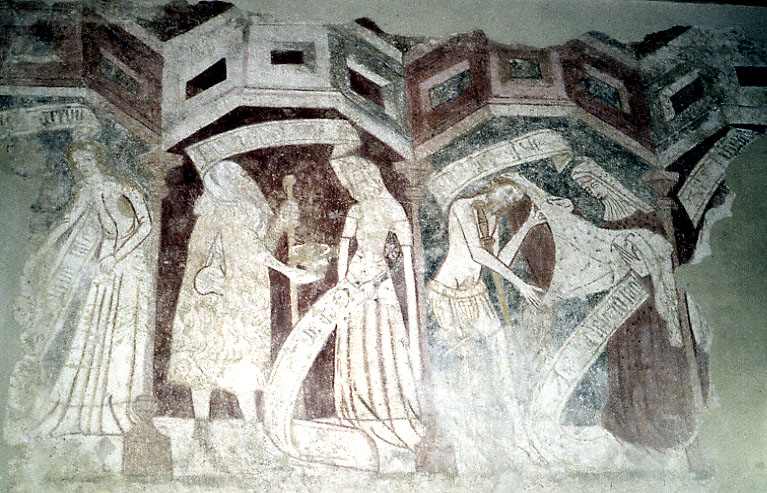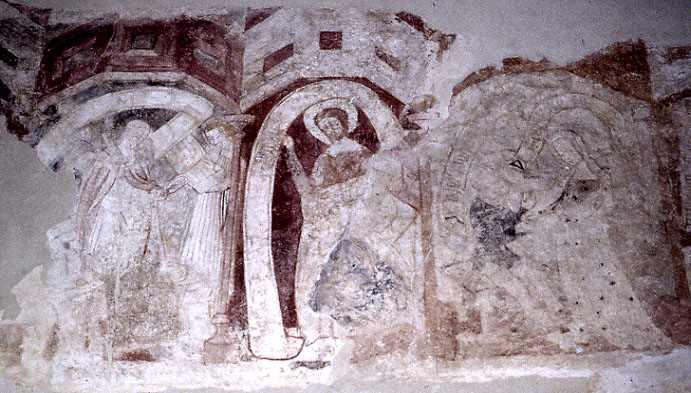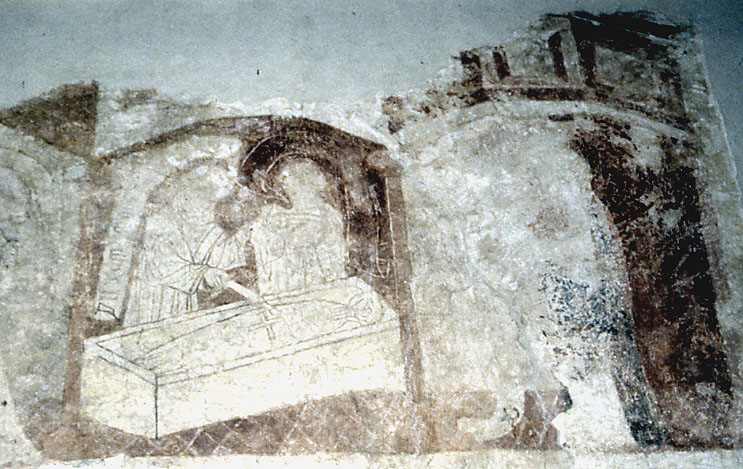Moulton St Mary, Norfolk (CCT*)
The Seven Works of Mercy

This 14th century example is remarkable for its fine architectural detail, striving for convincing perspective, at the top. Two of the individual Works, and what remains of a third, are shown here in their separated ‘compartments’. At the far left a woman is shown, but the figure she is ministering to has disappeared. This may be Receiving the Stranger or Feeding the Hungry. The next scene to the right is either Giving Drink to the Thirsty or Receiving the Stranger, and since the man at the left, holding out a bowl, has a staff and seems to be dressed like a pilgrim, this latter is more likely (the ‘Stranger’ is painted in pilgrim’s garb elsewhere). At the right a woman holds a robe with which she is about to clothe a man wearing only a loincloth (the significance of the sword – if that is what it is – hanging around his neck eludes me at present).

Further to the right another scene has been destroyed by the insertion of a window, and to the right of that is a scene which I cannot identify with certainty – it might be any of the remaining Works not otherwise identified. Beyond this scene is one which interrupts the sequence and shows Christ blessing (left), in the same kind of compartment as the others. Beyond this the sequence resumes with another scene, faint but almost certainly Visiting the Imprisoned (left), and then comes a scene of Burying the Dead (below), with a priest sprinkling Holy Water on a shrouded figure in a coffin while another figure stands beside him. There is yet another scene further to the right, but it is quite indecipherable now.

The Works of Mercy are often shown performed by a woman, and not only in provincial church art. In a very interesting Flemish miniature painting not much later than the scenes at Moulton, Margaret of Burgundy, sister of Edward IV of England, performs the Seven Works in scenes intriguingly similar in treatment to those here. Moreover Christ, identifiable by a rayed ‘glory’ around his head, is present in the background of at least five of them.¹ The inscriptions on the scrolls in the Moulton painting are, sadly, unreadable now, even on the walls themselves in good light, but the message the Church wanted to emphasise – Christ’s injunction in Matthew 25: 34-46 – is as clear in the rural Norfolk church as it is in the élite art of the Burgundy court.
* CCT=The Churches Conservation Trust, successor to the Redundant Churches Fund
¹ Bibl. Roy., Brussels, MS9296; reproduced in LF Salzman, English Life in the Middle Ages, Oxford,1926, pp.30-31